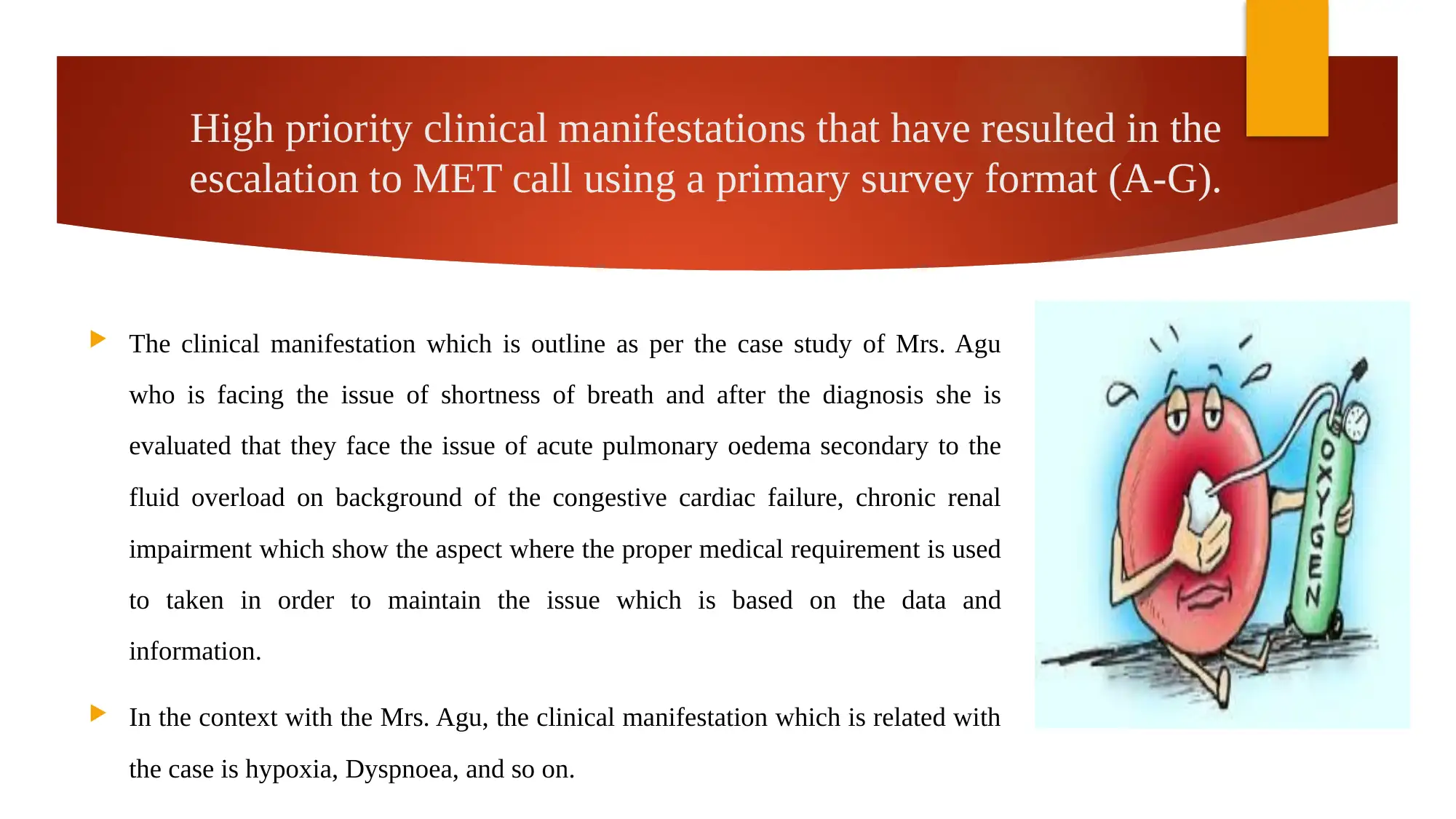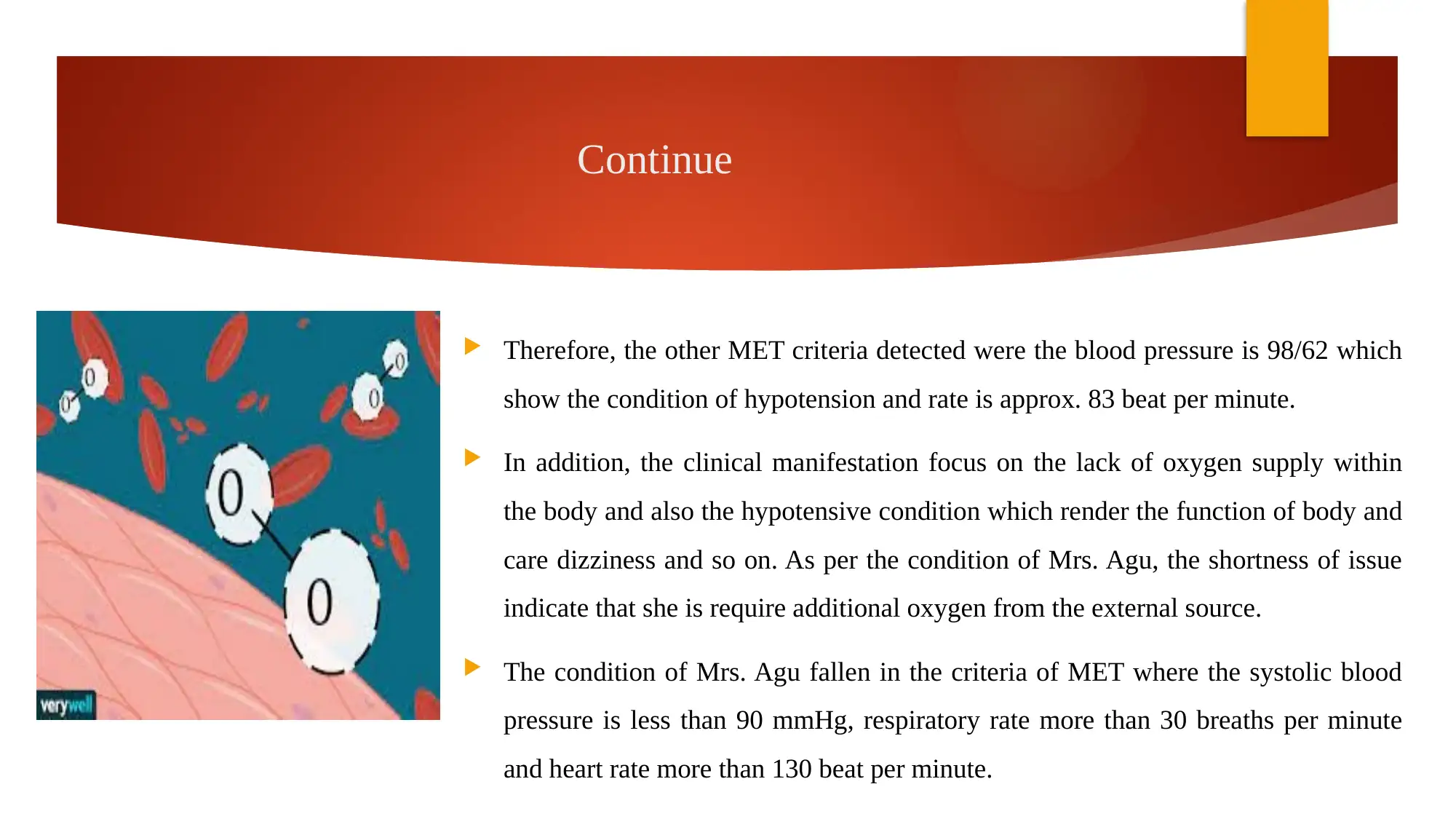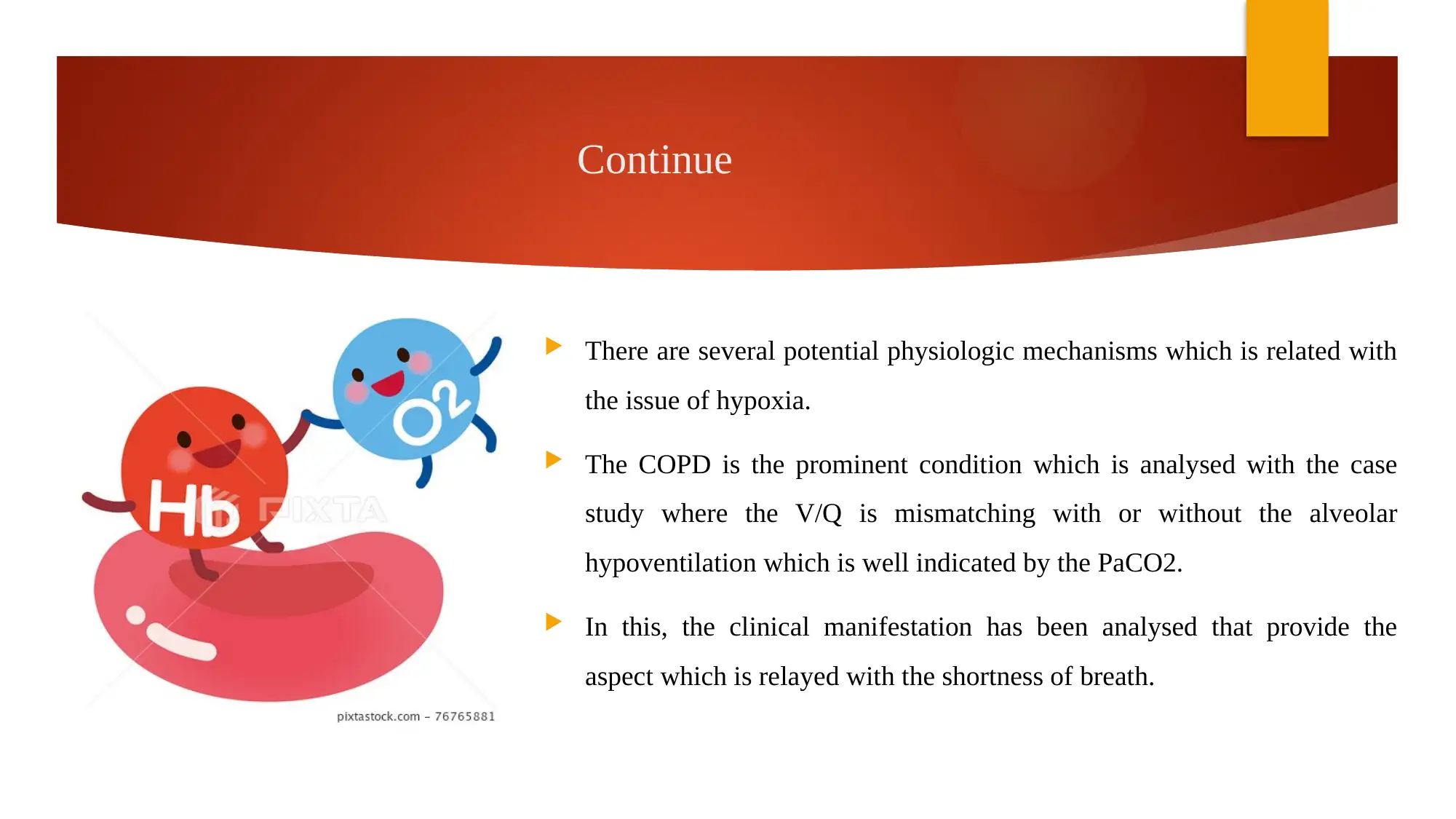High Priority Clinical Manifestations and MET Call: Group Presentation
VerifiedAdded on 2023/06/10
|7
|639
|151
Presentation
AI Summary
This presentation focuses on high-priority clinical manifestations that can escalate to a MET call, using a primary survey format (A-G). The case study of Mrs. Agu, experiencing shortness of breath due to acute pulmonary edema secondary to congestive cardiac failure and chronic renal impairment, is analyzed. Key clinical manifestations include hypoxia and dyspnea, with other MET criteria such as hypotension (blood pressure 98/62) and an elevated heart rate (83 bpm). The presentation explores the pathophysiology linking hypoxia and hypoxemia to the patient's condition, emphasizing the need for supplemental oxygen. The presentation also highlights the relevance of COPD in the context of the case study where V/Q mismatching is present, impacting the patient's respiratory status. References are provided to support the analysis, including studies on hypoxia and related conditions.
1 out of 7














![[object Object]](/_next/static/media/star-bottom.7253800d.svg)